On one hand, there is nothing quite so French as the Renault Alpine.
On the other, there is something about the Alpine that lures the Italian car enthusiast to the make, yet not quite sure of what to think of it. Perhaps a sort of a French Abarth; tiny, with a light, tight attractive body, a superb overall design hiding or at least diminishing the prominent proprietary power plant hanging well south of the rear axle, an affectation most notably best-conceived for the Simca Abarths or perhaps the 1000 Monomille. And despite the flagrant example of misplaced physics, the Alpine was very, very successful, particularly in rallies, somehow beating the best of the most flagrant violaters of physics, the Porsche 356 and 911, which never did pull off the stylistic body tricks of the Abarths and Alpines.
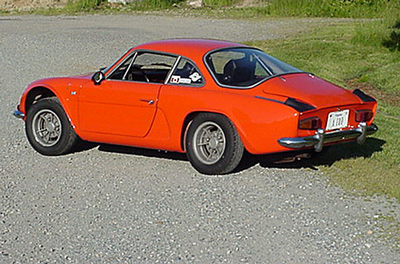
Designed in the early 1960s, the Alpine A110 looked good then and still is attractive today.
|
So we watched carefully from a rearward position as Ron Mitchell’s 1972 A110 Renault Alpine made its way through suburban tracts to the site of the photo shoot. Surely French, we mused after gazing at the nifty rear end. But didn’t our hero, Michelotti actually design the Alpine? Or did he just put pen to the prototype Alpine? Which in turn was built by Allemano? Ron wasn’t positive nor did his many French language books on the Alpine seem to make any definitive statements on the subject, while the Italians have been known, on very rare occasions, to elaborate upon what we angelics often call the truth.
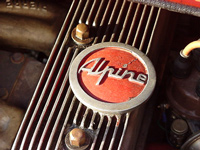
|
In actuality, we really don’t think anyone knows for proof positive, really sure, 100% conclusively about the A110. It most certainly has an Italian influence, but it is most assuredly French to the core.
It shares a very diminutive nature with the Abarths too. Overall length of the A 110 was only 151 inches, width 61 inches, wheelbase 82.7 inches and a height of only 44 inches. A nice, small tight package, which would prove to be a great asset as a major rally vehicle.
The general history of the A 110 will be related by Brandy Elitch next week, but it is worth spending a few bytes on the confusing engine specs of the long lived A110 Alpine, (1962-1977). The A110 appeared at roughly the same time as the Renault R8, and initially was equipped with a modified 956cc, 51 hp R8 engine. In 1963, Alpine offered the A 110 with an 1108cc, 58 hp R8 Major.
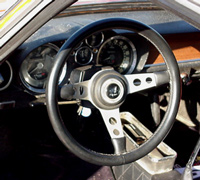
|
This engine could provide 85 hp, and was followed quickly by the Gordini version, 1296cc with 115 hp. In 1967, when the R16 debuted, and the 1470cc all aluminum engine was modified and installed into the Alpine. The R16 engine with a multitude of displacements and hp ratings then became the Alpine’s power plant until production ceased in 1977. The Alpine grew from a 51 hp putter to a world class rally car with 1.8 cc and 172hp. Throughout the years, both four an five speed transmissions were available.
In the middle of this wide range of engines stood the 1300, the 1300S, the “85” and the 1300G., and depending on the year, the 1300 could be either based on the R8 or later R12. The R12 1289 provided a new 1300 for the Alpine in 1970, rated at 81 hp. Between the years 1970 and 1976, 1890 “85”s were built, making them the most common of an uncommon car. And this is the type found by Ron Mitchell while working in France, many years ago.
It is orange. Very ‘70s orange. “When I bought the car, it had wide flairs and wheels, and we needed to bring it back to standard specs. Underneath the repaint, we found the original color was orange.” Which was a bonus for Ron, as he had seen an orange Alpine as a teenager and began to yearn for an Alpine, and in particular an orange Alpine. Restoring the car he found in France, he got his wish.
It is not a particularly fast Alpine--that is left to the 1600S, the famed rally car, and with a 40/60 weight distribution, the higher horse Alpines are probably not all that much fin to drive. But the “85”, with less torque and 85 horses can be thrown around with more pleasure and less pain. We did not record any figures, but found some notes taken from a 1970 A 110 with a 1300 G (for Gordini). Top speed, 120 mph; 0-60, 8.7 seconds. The R16 engined 1600SC was good for 130 mph, 0-60 in 7 seconds. A favored comparison of the day was to the Lotus Europa, good for 110 mph and 0-60 in9.5 seconds.
Where the style of the Alpine’s coachwork succeeds brilliantly, the rough and unfinished interior does not impress. Which is probably why one doesn’t see a lot of interior shots of Alpines. It seems ill thought out, last minute and very kit car like. Yet the window winders are almost works of art--hardware taken, we think, from an Lancia.
The Italians had one more hand to play in the Alpine story. The firm of OSI in Italy rebodied an A 110 for the 1965 Turin show. In 1967, OSI took an Alpine engine and placed it in one of the twin fuselages of the bizarre “Silver Fox”, no doubt a reminder of Piero Taruffi’s (The Silver Fox) “Twin Boom” record car.
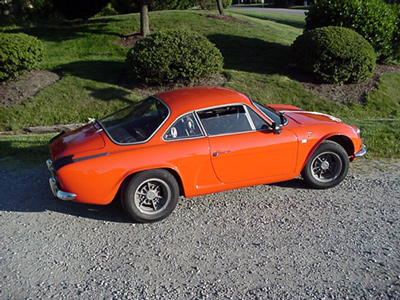
1890 "85" Alpines were built between 1970 and 1976, making them the most common of the Alpines. Still, they were not offically imported into the U.S. and are very hard to find on this side of the pond.
|
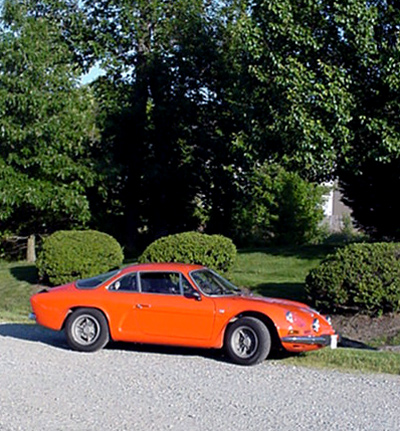
Ron Mitchell always wanted an orange Alpine. He bought a blue one but found the original paint underneath to be orange.
|
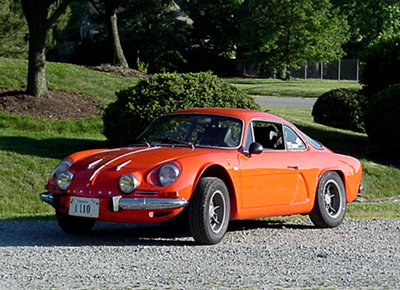
The front end is attractively busy with many French curves.
|
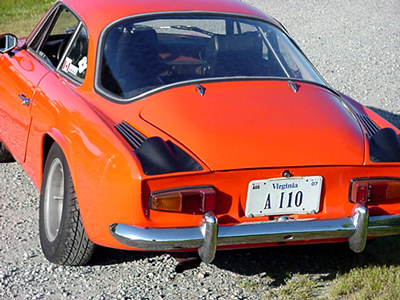
At the rear, the stylistic cooling intake vents don't appear to be large enough to cool a can of beer, but overheating is not a problem.
|
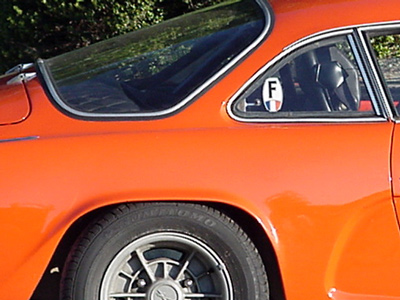
Ron's car is a driver, not a showcar. He didn't wash it before the photo session, and that's good. The look is natural.
|
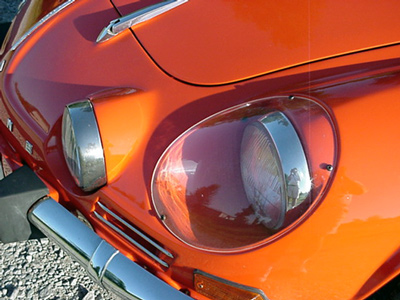
What did we say about that front end?
|
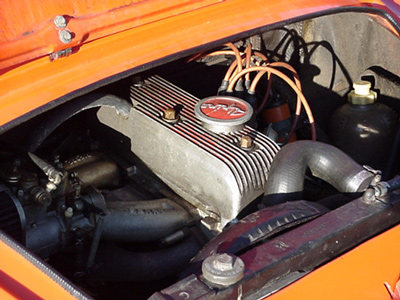
The R12 engine put out "85" horsepower hence the particular model designation.
|
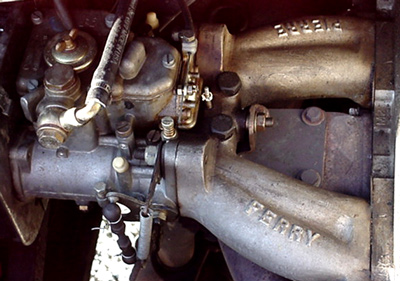
"Ferry" as seen on the intake manifold, was a famous Renault tuner. The carb is a Weber 40 DCOE.
|



